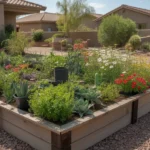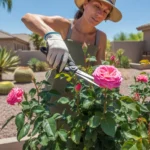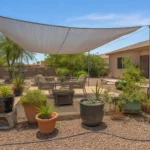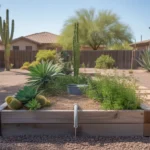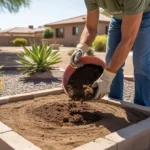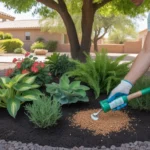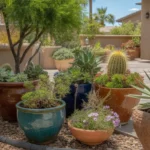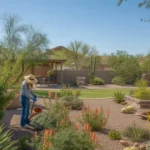As the scorching Arizona summer approaches, Chandler gardeners face the challenge of protecting their precious plants from intense heat and sun. With a few smart strategies, you can create a “sunscreen garden” that helps your plants survive and thrive through the toughest months. Here’s how to shield your garden from summer stress while keeping it lush and vibrant.
Choose Heat-Tolerant Plants
The foundation of a sunscreen garden is selecting plants that are naturally adapted to Chandler’s hot, arid climate. Native and desert-adapted species have evolved to withstand extreme temperatures and low water conditions. Some top picks for Chandler include:
- Chuparosa (Justicia californica)
- Desert marigold (Baileya multiradiata)
- Penstemon species
- Yellow bells (Tecoma stans)
- Bougainvillea
These resilient plants will keep your garden colorful even on the hottest days. Pair them with heat-loving herbs like rosemary and sage for an extra layer of toughness.
When shopping for new plants, look for specimens that are already acclimated to outdoor conditions. Avoid tempting greenhouse-grown plants that may struggle with the transition to Chandler’s intense sun and heat.
Provide Shade Where It Counts
Even sun-loving plants appreciate some respite from Chandler’s relentless summer rays. Thoughtful placement of shade can make a big difference in your garden’s resilience.
Take advantage of the shade cast by walls, trees, or large shrubs. Observe how the shadows move across your yard throughout the day and position sensitive plants where they’ll be shielded during the hottest hours, typically from noon to late afternoon.
For areas that lack natural shade, create your own with shade sails, pergolas, or lattice screens. Choose materials in light colors to reflect more heat. Ensure there’s still adequate air circulation to prevent overheating and fungal issues.
Mulch Like It’s Your Job
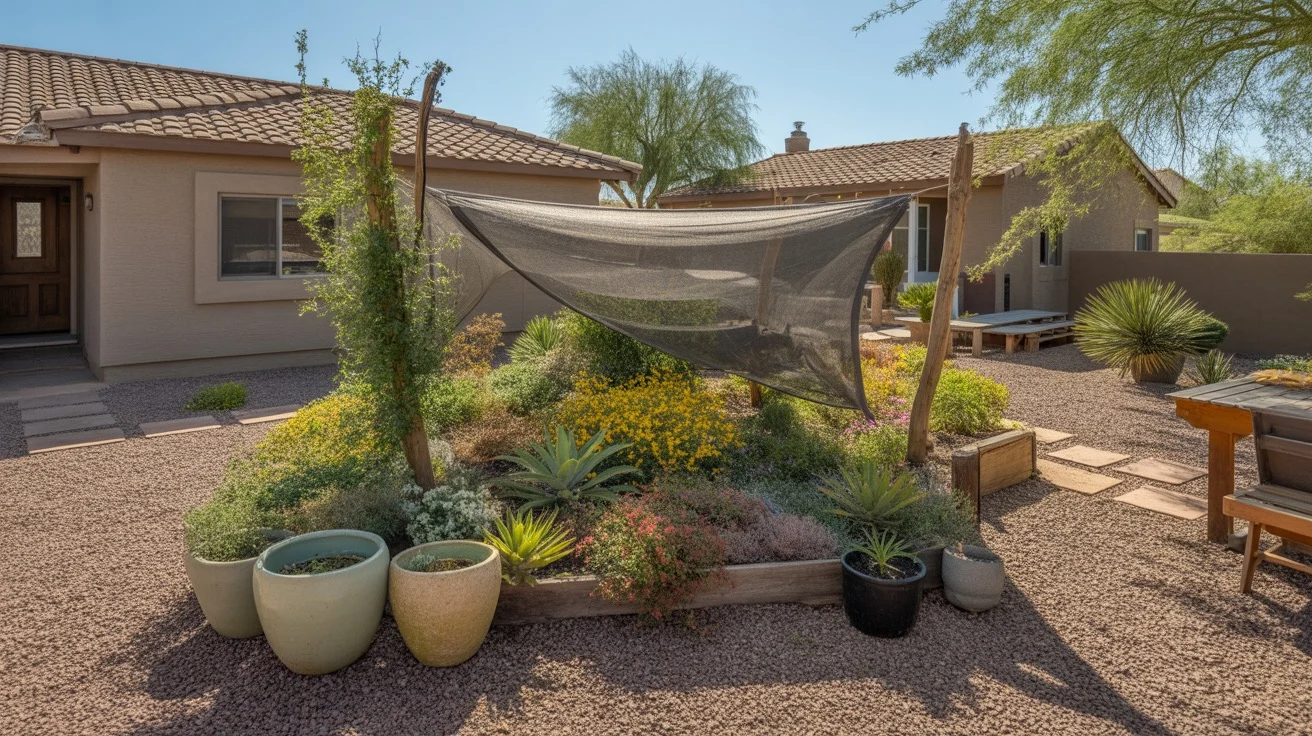
A thick layer of organic mulch is your garden’s best friend in the fight against summer heat. Mulch acts like sunscreen for your soil, shielding it from direct sun and reducing evaporation. It also moderates soil temperature, preventing the wild swings that can stress plant roots.
Apply a 3-4 inch layer of mulch around your plants, keeping it a few inches away from stems and trunks to avoid rot. Good mulch options for Chandler include shredded bark, straw, or compost. Gravel can also be effective, but opt for light-colored types that won’t absorb and radiate too much heat.
Remember to replenish the mulch layer periodically as it breaks down. Your plants will reward you with healthier growth and improved resilience.
Water Wisely
Proper watering is crucial for helping plants cope with Chandler’s summer heat. But more isn’t always better – overwatering can be just as damaging as drought stress.
Water deeply and infrequently to encourage deep root growth. Aim to moisten the soil to a depth of at least 6 inches for established plants. Avoid frequent shallow watering, which promotes weak surface roots that are more vulnerable to heat and drought.
The best time to water is early morning, giving plants time to absorb moisture before the day heats up. If you must water in the evening, do so early enough that foliage can dry out before nightfall to minimize disease risk.
Protect Container Plants
Container gardens are especially vulnerable to heat stress, as the soil in pots heats up much faster than in-ground beds. Give your potted plants extra TLC to help them weather the Chandler summer.
Position containers where they receive morning sun but are shaded from intense afternoon rays. Cluster pots together to create a humid microclimate and slow evaporation. Consider double-potting, nesting a smaller pot inside a larger one filled with insulating material like mulch or sand.
Terra cotta and dark-colored pots absorb more heat, so opt for light-colored plastic or glazed ceramic containers instead. Ensure all pots have adequate drainage to flush out salts that can build up from rapid evaporation.
Don’t Forget the Foliar Love
In addition to protecting roots and soil, give your plants’ foliage some extra care. Intense sun and heat can scorch leaves, damaging plants’ ability to photosynthesize.
For sensitive species, consider using shade cloth or row covers during the hottest part of the day. These materials allow light and air to penetrate while filtering out a portion of the sun’s intensity.
Regularly dust or rinse accumulated dirt and debris from leaves so they can function at their best. If a plant does suffer leaf scorch, resist the urge to remove the damaged foliage right away – it can still provide some shade and photoprotection for the leaves below.
Plan Ahead for Fall
While your summer garden is in full swing, it’s also a great time to start planning for fall. Many Chandler gardeners use the hot months to prepare for the cooler planting season ahead.
Start seeds indoors for fall crops like broccoli, carrots, and lettuce so they’ll be ready to transplant when temperatures drop. Prep empty beds by adding compost and slow-release fertilizers that will be available to support the next round of plants.
As you dream up your ideal fall garden, take notes on what worked well and what struggled in your summer “sunscreen garden.” Those observations will help you make even better plant choices and placement decisions next year.
With a little extra care and attention, your Chandler garden can sail through summer looking its best. By choosing the right plants, providing shade and mulch, and watering wisely, you’ll create a thriving oasis that beats the heat. Your sunscreen garden will be the talk of the neighborhood!


